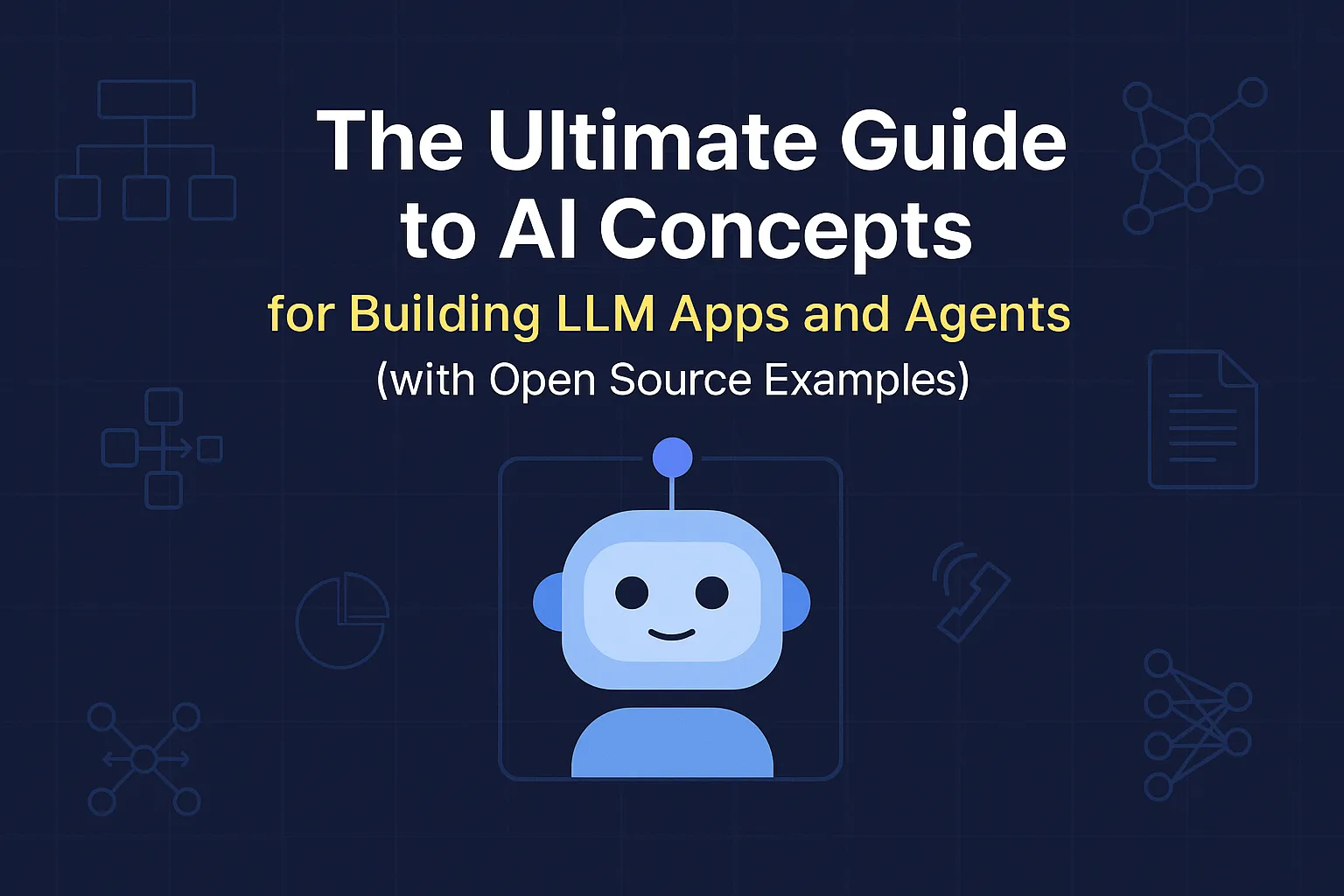In the fast-moving world of AI development, understanding the landscape of concepts and tools is essential. Whether you’re building a chatbot, an AI agent, or a knowledge assistant, these foundational concepts form the building blocks of a powerful LLM application.
Below is a categorized, concept-driven guide to help you build AI-native apps with clarity.
1. LLM (Large Language Models)
What it is: The core engine that generates, understands, and transforms language.
Purpose: Power conversation, summarization, code generation, reasoning, etc.
Top Open Source Example:
- LLama 3 / 4 (by Meta)
- Mistral
2. Prompt Engineering
What it is: Designing inputs to get optimal outputs from an LLM.
Includes: Few-shot, zero-shot, chain-of-thought, system prompts.
Open Source Tools:
- PromptLayer (CMS for prompts)
- Guidance by Microsoft
- LangChain prompt templates
3. RAG (Retrieval-Augmented Generation)
What it is: Combines LLMs with external data (like documents or databases) for up-to-date, grounded responses.
Includes: Chunking, embedding, retrieval, context injection.
Top Open Source Examples:
- LlamaIndex
- LangChain RAG pipeline
- Haystack
- RAGStack by Hugging Face
4. Embeddings
What it is: Numeric representations of text used for semantic similarity and search.
Use Cases: Similarity search, retrieval, memory.
Popular Open Source Models:
- BGE by BAAI
- E5 by MTEB
- Instructor
- GTE (Google)
5. Vector Database
What it is: Stores and retrieves embeddings for fast similarity search.
Use Cases: Powering RAG, recommendations, memory for agents.
Top Open Source Examples:
- Qdrant
- Weaviate
- Milvus
- FAISS (local, in-memory)
6. Agents
What it is: Autonomous AI entities that decide what tools to use, when to reason, and how to act.
Includes: Planning, reasoning, tool use, memory.
Top Open Source Frameworks:
- LangGraph
- AutoGen (Microsoft)
- CrewAI
- MetaGPT
7. State Management / Memory
What it is: Persistence of context, past interactions, and state across agent steps.
Types: Short-term (per session), long-term (persistent), episodic.
Open Source Patterns:
- LangGraph state object
- Redis memory stores
- LlamaIndex context memory
8. Tool Use / Function Calling
What it is: Agents call APIs or tools (weather, search, DB) to gather info or act.
Types: Function Calling, JSON-based tools, plugins.
Examples:
- LangChain tools
- AutoGen tool wrappers
- ReAct agent pattern
9. Orchestration Framework
What it is: Manages flows between LLMs, tools, memory, users.
Purpose: Build complex LLM apps with modular logic.
Top Open Source Examples:
- LangChain
- LangGraph
- Semantic Kernel
- Haystack
10. Tool Integration / Plugins
What it is: External utilities agents can use (e.g., code interpreter, SQL, browser).
Popular Plugins:
- Python REPL
- SQL Database tools
- Web search tools
11. Chunking & Text Splitting
What it is: Breaking documents into digestible pieces for embedding and context injection.
Tools:
- RecursiveTextSplitter (LangChain)
- SentenceSplitters in LlamaIndex
12. Guardrails & Validation
What it is: Ensure outputs are safe, correct, and within bounds.
Includes: JSON schema validation, regex, classification, moderation.
Top Tools:
- Guardrails.ai
- Rebuff
- Flowise validators
- LMQL (LLM query language with constraints)
13. Observability & Tracing
What it is: Track what LLMs do, debug reasoning paths, and improve performance.
Tools:
- LangSmith
- Traceloop
- Helicone
14. Agent Memory Graphs / Cognitive Architectures
What it is: Structure agents with working memory, long-term memory, task queues.
Open Source Ideas:
- LangGraph state trees
- MemGPT
- CAMEL agents
- DSPy (Stanford)
15. Deployment & Serving LLMs
What it is: Host models or agents locally or via APIs.
Open Source Options:
- llama.cpp
- Ollama
16. Multi-Agent Systems
What it is: Multiple agents collaborating or debating to solve a problem.
Patterns:
- Planner → Tool Selector → Executor
- Debate → Finalizer
Frameworks:
- AutoGen
- CrewAI
- LangGraph
- MetaGPT
17. Frontend for LLM Apps
What it is: Chat interfaces, dashboards, inputs for end-users.
Popular Open Source UIs:
- LangFlow (visual LangChain builder)
- Flowise
18. Multi-modal & Vision Models
What it is: LLMs that understand both text and images (or more).
Top Models:
- MiniGPT-4
- Mistral multimodal
19. Agents-as-APIs (AgentOps)
What it is: Serve agents as RESTful APIs, SaaS logic, or functions.
Use Cases: CRM bots, assistants, devtools.
Tools:
- FastAPI + LangChain
- CrewAI + Flask
20. Data for LLM Apps
What it is: Source material for RAG, fine-tuning, evals.
Includes: PDFs, Notion, Confluence, SQL, CSVs
Tools:
- LlamaIndex connectors
- LangChain loaders
- Unstructured.io
Final Thoughts
Building AI agents is no longer just about using a language model — it’s about orchestrating tools, data, memory, and workflows into reliable, explainable, and user-friendly systems.
This guide covered the foundational concepts and the best open-source options for each one. Whether you’re building a real estate assistant, internal agent platform, or dev AI co-pilot — these are the blocks you’ll work with.

